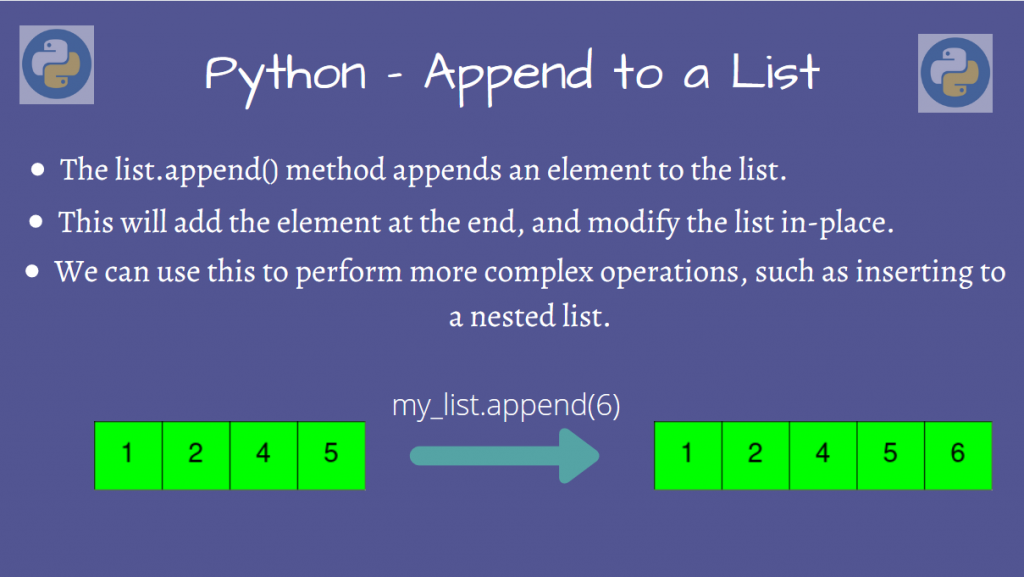In this article, we’ll take a look at how we can append to a List in Python.
Python’s list.append() provides the solution to this, so we’ll see some examples using this method.
Let’s get started!
Append to a normal List in Python
We can use Python’s built-in append() method on our List, and add our element to the end of the list.
my_list = [2, 4, 6, 8]
print("List before appending:", my_list
# We can append an integer
my_list.append(10)
# Or even other types, such as a string!
my_list.append("Hello!")
print("List after appending:", my_list)
Output
List before appending: [2, 4, 6, 8]
List after appending: [2, 4, 6, 8, 10, "Hello!"]
As you can observe, our list has the two elements 10 and “Hello” inserted at the end. This is the case when you’re appending to a normal list.
Let’s now look at some other cases now.
Append to a List in Python – Nested Lists
A Nested List is a List that contains another list(s) inside it. In this scenario, we will find out how we can append to a list in Python when the lists are nested.
We’ll look at a particular case when the nested list has N lists of different lengths. We want to insert another list of exactly N elements into our original list.
But now, instead of directly appending to the nested list, we’ll be appending each of the N elements to each of the N lists, in order.
To show you an example, here’s our nested list having N = 3 lists:
nested_list = [[1, 2, 3], [4, 5, 6, 7], [2, 4, 5, 6, 7]]
We’ll insert each of the N elements of the list:
my_list = [10, 11, 12]
10 will be appended to the first list, 11 to the second, and 12 to the third.
So, our output will be:
[[1, 2, 3, 10], [4, 5, 6, 7, 11], [2, 4, 5, 6, 7, 12]]
Got the problem? Let’s solve it now!
So, for each list in our nested list, we pick the corresponding element from my_list and append it to that list. We keep doing this until we reach the end of the nested list, as well as my_list.
A possible approach would be to iterate through the nested list. Since we know that every element of the nested list is a list, we can take the index of the current element, and append my_list[idx] to nested_list[idx].
nested_list = [[1, 2, 3], [4, 5, 6, 7], [2, 4, 5, 6, 7]]
my_list = [10, 11, 12]
for idx, small_list in enumerate(nested_list):
small_list.append(my_list[idx])
print(nested_list)
Output
[[1, 2, 3, 10], [4, 5, 6, 7, 11], [2, 4, 5, 6, 7, 12]]
Indeed, our output matches what we expected!
Conclusion
In this article, we learned how we could append to a Python List, and examined various cases for this process.
